1971 McLaren M19A Navigation
When Denny Hulme emerged from his McLaren M19A the victor of the South African Grand Prix in 1972, there would be a collective sigh of relief at McLaren. Just a little more than a year and a half earlier, Bruce McLaren, the foundation of the team, had perished in a crash during a Can-Am race. The team would lose its foundations and would slowly begin to sink into the earth. However, the victory by Hulme in the M19A would help to revitalize the team giving it confidence heading forward instead of perishing with the past.
Monoposto
Chassis #: M19A-2
View info and historyIt had been a terrible couple of years for the team. McLaren's efforts were stretched thin. While the team was dominant in Can-Am racing, the team was merely holding on in Formula One. And this was not good considering the majority of the major manufacturers still put a great deal of their efforts into Formula One.McLaren's Formula One program would start out strongly enough with a few victories being scored and finish 2nd in the championship. However, as the years clicked by, the point tally would steadily decrease until 1971 would end with the team 6th in points with just a meager 10 points. This decrease in performance in Formula One would only be made worse by the death of the McLaren in 1970. To top it all off, Hulme would badly burn his hands at Indianapolis. All of a sudden, the world around McLaren would be rattled to its core. And while it was clear the team was to continue on, and would have much more success in Can-Am, its Formula One program would turn into a series of patches and quick fixes until the team could get itself together and focused once again. 
Monoposto
Chassis #: M19A-2
View info and historyIt would all start with the M14A, which would be just an evolution of the M7. But even this evolution would have good beginnings scoring podium results early on in 1970. However, by the end of the season it was clear the competition had left McLaren wanting. The team needed a new and competitive car that could fight back against the competition not merely wait and hope they would all get out of its way. But the team would find their return to form wouldn't necessarily have to do with a specific chassis but it what basket it would put its eggs.McLaren had a team of talented people but the projects were so vast and varied that it seemed the team would not be able to be as good in Formula One as what they surely wanted to be. However, Ralph Bellamy would take a step forward and would commit himself to McLaren's Formula One project. He was determined to make McLaren as strong and as dominant as what it was in Can-Am. That would be a lofty goal, but it would help to give himself and a portion of the manufacturer some focus.Bellamy would stay simple. He would use proven ideas and technology when creating McLaren's first brand new Formula One car in a number of years. The chassis would consist of a basic aluminum monocoque design. However, the fiberglass bodywork would be shaped in the new 'Coke bottle' styling to provide better airflow around the side of the car. This chassis design would be mated to a wide, low-profile nose sporting a narrow radiator inlet opening. The reclined radiator allowed for the lower profile of the nose while large vents on the top of the bodywork would help to eradicate the hotter air and pull in more cooler air through the narrow opening. The radiator lines would actually exit low out of the sides of the chassis around the front suspension and would travel back along the side of the chassis to the engine. The oil cooler would be mounted aft of the rear axle.
Monoposto
Chassis #: M19A-2
View info and historyHandling of the new car would be of utmost importance. This would lead Bellamy and his crew to equip the new car with a new rising rate suspension system. This would provide the car, with its double wishbone, coil spring suspension, with a rather stiff feel but that would soften as the wheel travelled further. Mated to rack and pinion steering, the new M19A, as it would become known, would offer good handling. Attached to the back of the chassis as a fully-stressed member of the car, would be the 90-degree Ford Cosworth DFV V8 offering 450 bhp at 10,000 rpm. Mated with a Lucas fuel injection system, a tall wide-mouthed airbox and a Hewland DG 5-speed manual gearbox, the M19A was capable of a zero to 60 time of just 4 seconds. Its top speed pushed 190 mph. But as the car made its debut in 1971, it would prove to be quick for sure. But it would also prove quite fragile as Hulme would experience losing the lead of the South African Grand Prix with just 4 laps remaining. One thing about the car that was good was the driver's visibility. Bellamy, of course, would be looking to create a good stable car that was quick. In order to have a car with that kind of handling the car had to have a low center of gravity. The car's fuel tanks would then be fitted within the wide portions of the chassis to either side of the driver. Therefore, the mid-section of the car's chassis would be designed low to the ground with the fiberglass body wrapping tightly over the tanks and towards the middle of the car before rising sharply around the driver's cockpit. But while the driver would sit up in the car, the driver's legs would be at the same height as the driver's bottom. Combined with the aerodynamically-shaped windscreen wrapping around the driver, the feel inside the car would have been one of feeling a part of the car. Interestingly, the roll-over hoop would be, compared to most other designs, be turned around with the supporting members of the hoop traveling forward toward the cockpit.
Monoposto
Chassis #: M19A-2
View info and historyAt just 1230 pounds and sporting a 450 hp engine, the M19A had the power to keep up with and beat the best. Sporting single-plane rear and front wings, the driver still slid the car through corners more than relied on aerodynamics to help it corner like it was on rails. But with the well-balanced layout of the car Hulme, and others, found the car to have good handling although it could have been better.
The M19A had all of the features necessary to help McLaren return to the top. Indeed, the M19A would prove to be quick at just about every circuit. However, one aspect was missing—reliability. Unreliability would plague the car throughout the 1971 season and would even cause the M14A to continue to see some use throughout the season.Nonetheless, McLaren had a new car. Given some time and focus on the program it was believed the car could improve enough to become a race winner. Heading into the 1972 season, McLaren would begin to switch its focus towards its Formula One program. The Porsche 917 was becoming the powerhouse in Can-Am racing and this would lead McLaren to look elsewhere. This would increase the efforts in the Formula One program, which would only help to increase the effectiveness of the M19A. This would quickly pay off.The 1972 season would start out with Denny Hulme finishing 2nd in the Grand Prix of Argentina behind Jackie Stewart. The next race on the calendar was the one that slipped away from Hulme the year before with only 4 laps remaining.
Monoposto
Chassis #: M19A-2
View info and historyThis time history would not repeat itself. Hulme would be in the lead heading into the final laps of the race but the car would hold together for him all the way to finish so that he would score McLaren's first victory since McLaren scored victory in Spa in 1968. And while this would prove to be the only victory the team would earn throughout the whole of the 1972 season, it was clear the team was back on the rise. Whereas the trend for McLaren in Formula One had been on a downward one ever since its sophomore season, the M19A would help to turn that trend around. Combined with the help of its cousin, the M19C, the M19A would enable McLaren to secure 3rd place in the Constructors' Championship in 1972. It would be followed up with another 3rd the following year. The M19A would give birth to a renewed sense of purpose with McLaren concerning Formula One. It would also help to give birth to the M23. The M23 would go on to win no fewer than 16 races between 1973 and 1976. It would also give McLaren the Constructors' Championship in 1974, just the first of what would become many in the company's history.Sources:
'1971 World Drivers Championship', (http://www.silhouet.com/motorsport/archive/f1/1971/f171.html). 1971 World Drivers Championship. http://www.silhouet.com/motorsport/archive/f1/1971/f171.html. Retrieved 20 June 2012.
Monoposto
Chassis #: M19A-2
View info and history'1972 World Drivers Championship', (http://www.silhouet.com/motorsport/archive/f1/1972/f172.html). 1972 World Drivers Championship. http://www.silhouet.com/motorsport/archive/f1/1972/f172.html. Retrieved 20 June 2012.'McLaren-Ford Cosworth', (http://www.manipef1.com/constructors/1971/mclarenfordcosworth/). ManipeF1. http://www.manipef1.com/constructors/1971/mclarenfordcosworth/. Retrieved 20 June 2012.'McLaren M19A (1971-1972)', (http://histomobile.com/m5/l2/mclaren-m19a/285700891.htm). Histomobile.com. http://histomobile.com/m5/l2/mclaren-m19a/285700891.htm. Retrieved 20 June 2012.
Monoposto
Chassis #: M19A-2
View info and history'McLaren M19A Cosworth', (http://www.ultimatecarpage.com/car/2860/McLaren-M19A-Cosworth.html). Ultimatecarpage.com: Powered by Knowledge, Driven by Passion. http://www.ultimatecarpage.com/car/2860/McLaren-M19A-Cosworth.html. Retrieved 20 June 2012.'McLaren M23 Cosworth', (http://www.ultimatecarpage.com/car/330/McLaren-M23-Cosworth.html). Ultimatecarpage.com: Powered by Knowledge, Driven by Passion. http://www.ultimatecarpage.com/car/330/McLaren-M23-Cosworth.html. Retrieved 20 June 2012. By Jeremy McMullen
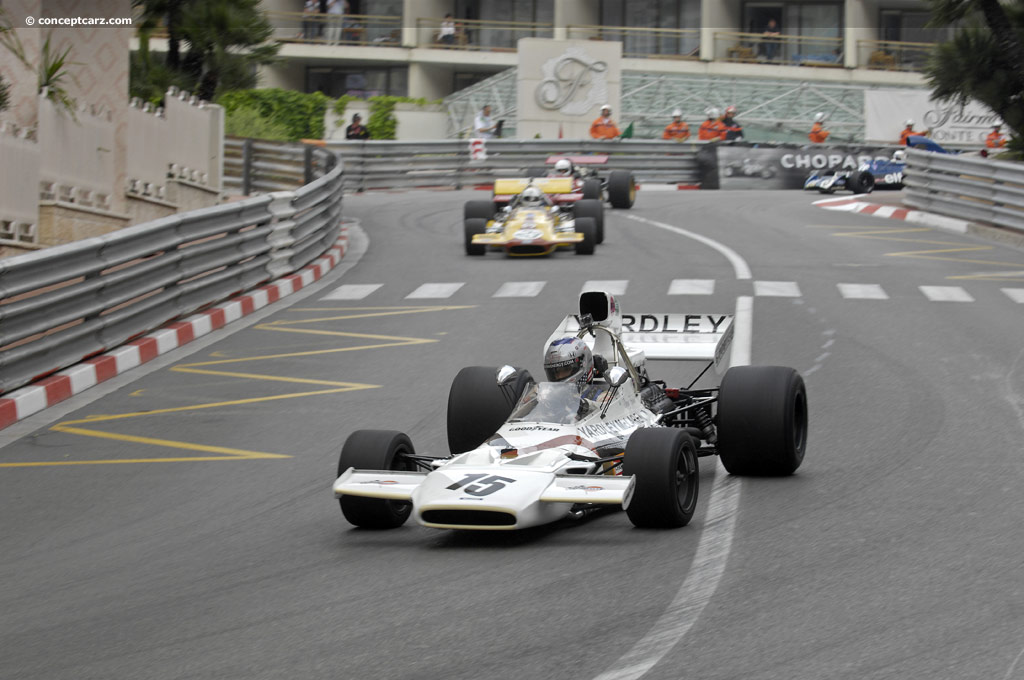
Monoposto
Chassis #: M19A-2
View info and history
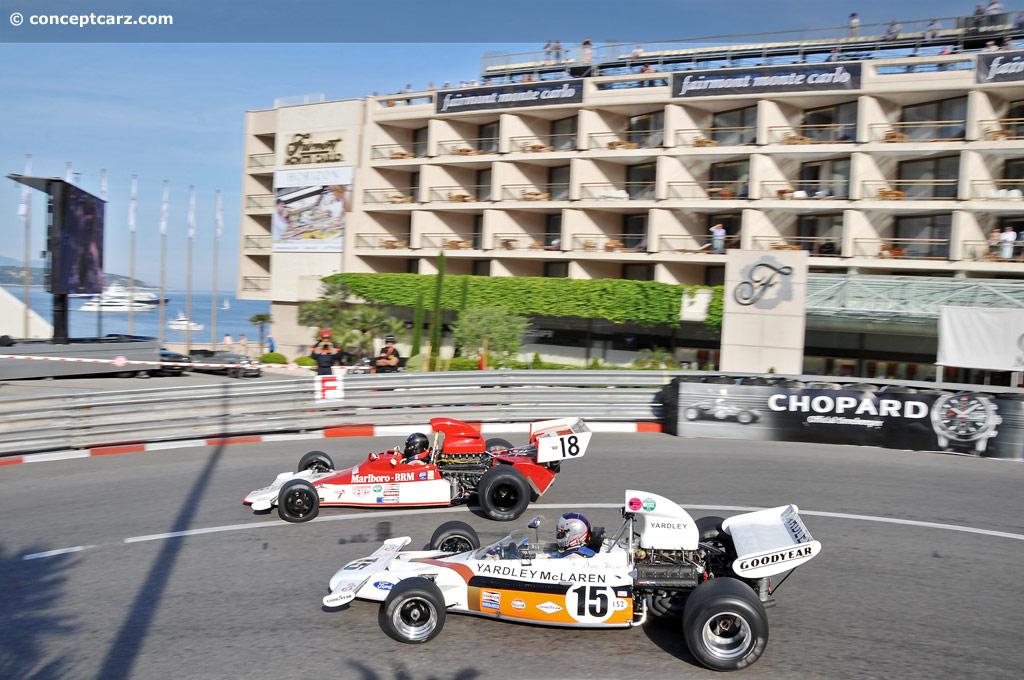
Monoposto
Chassis #: M19A-2
View info and history
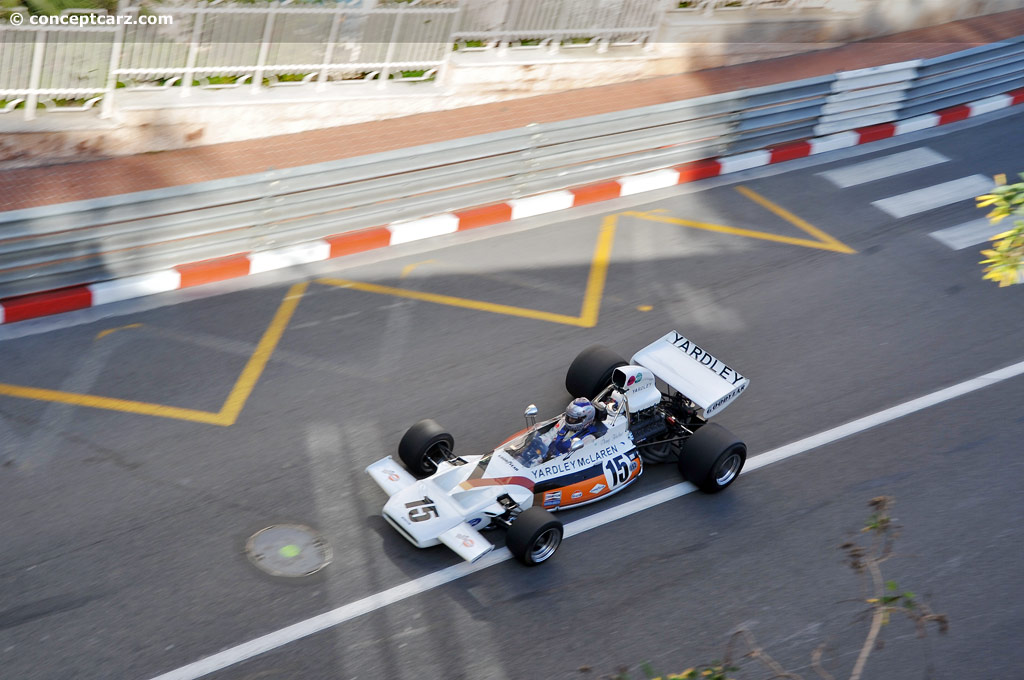
Monoposto
Chassis #: M19A-2
View info and history
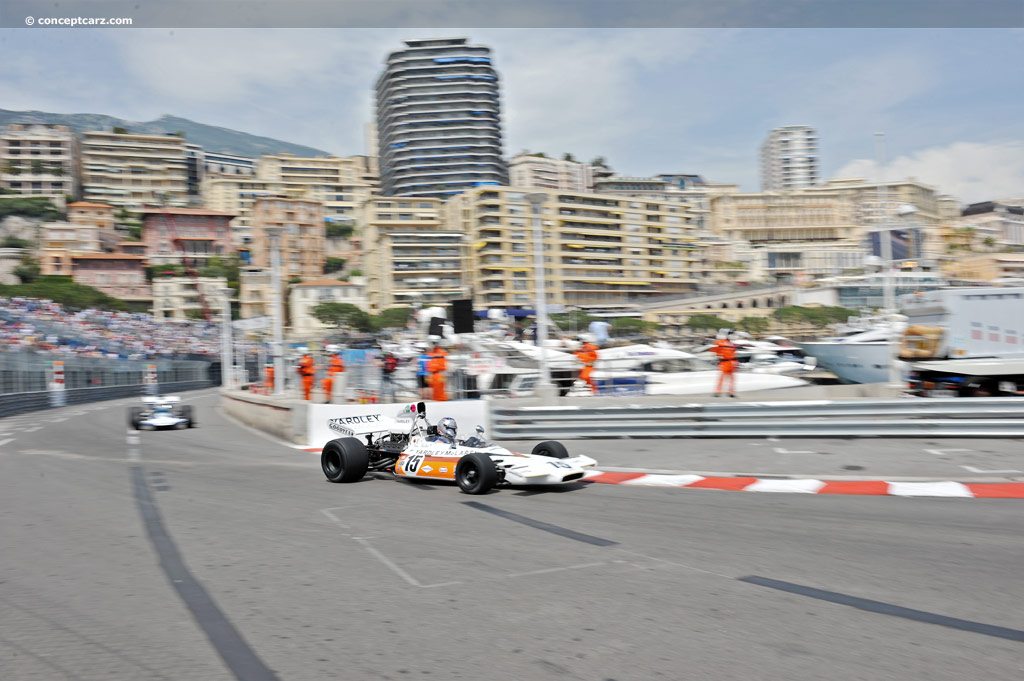
Monoposto
Chassis #: M19A-2
View info and history
The M19A had all of the features necessary to help McLaren return to the top. Indeed, the M19A would prove to be quick at just about every circuit. However, one aspect was missing—reliability. Unreliability would plague the car throughout the 1971 season and would even cause the M14A to continue to see some use throughout the season.Nonetheless, McLaren had a new car. Given some time and focus on the program it was believed the car could improve enough to become a race winner. Heading into the 1972 season, McLaren would begin to switch its focus towards its Formula One program. The Porsche 917 was becoming the powerhouse in Can-Am racing and this would lead McLaren to look elsewhere. This would increase the efforts in the Formula One program, which would only help to increase the effectiveness of the M19A. This would quickly pay off.The 1972 season would start out with Denny Hulme finishing 2nd in the Grand Prix of Argentina behind Jackie Stewart. The next race on the calendar was the one that slipped away from Hulme the year before with only 4 laps remaining.
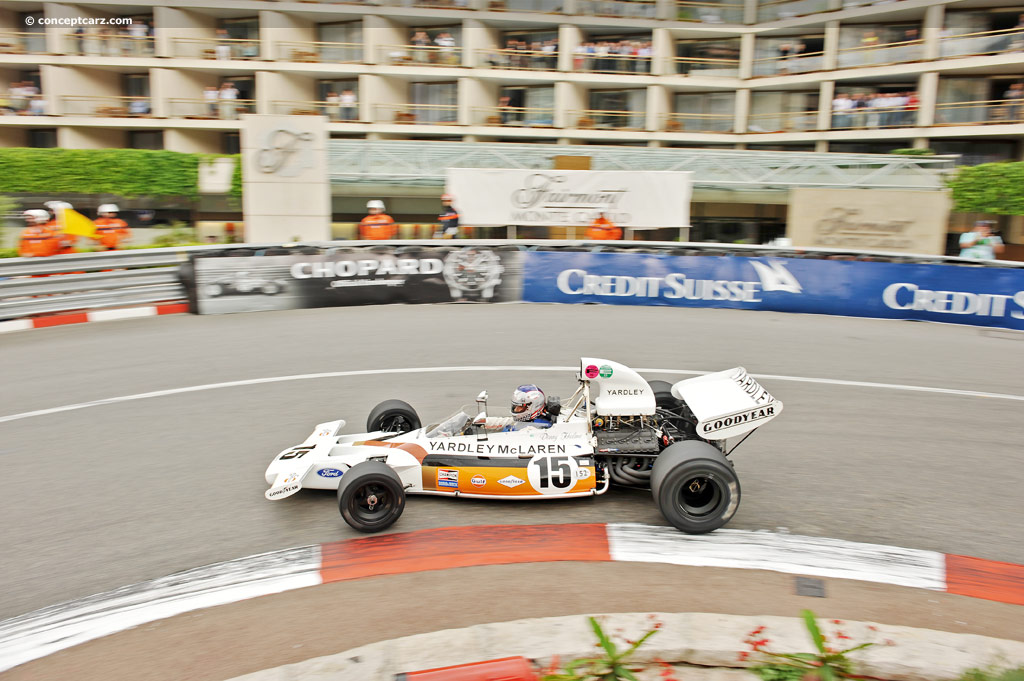
Monoposto
Chassis #: M19A-2
View info and history
'1971 World Drivers Championship', (http://www.silhouet.com/motorsport/archive/f1/1971/f171.html). 1971 World Drivers Championship. http://www.silhouet.com/motorsport/archive/f1/1971/f171.html. Retrieved 20 June 2012.
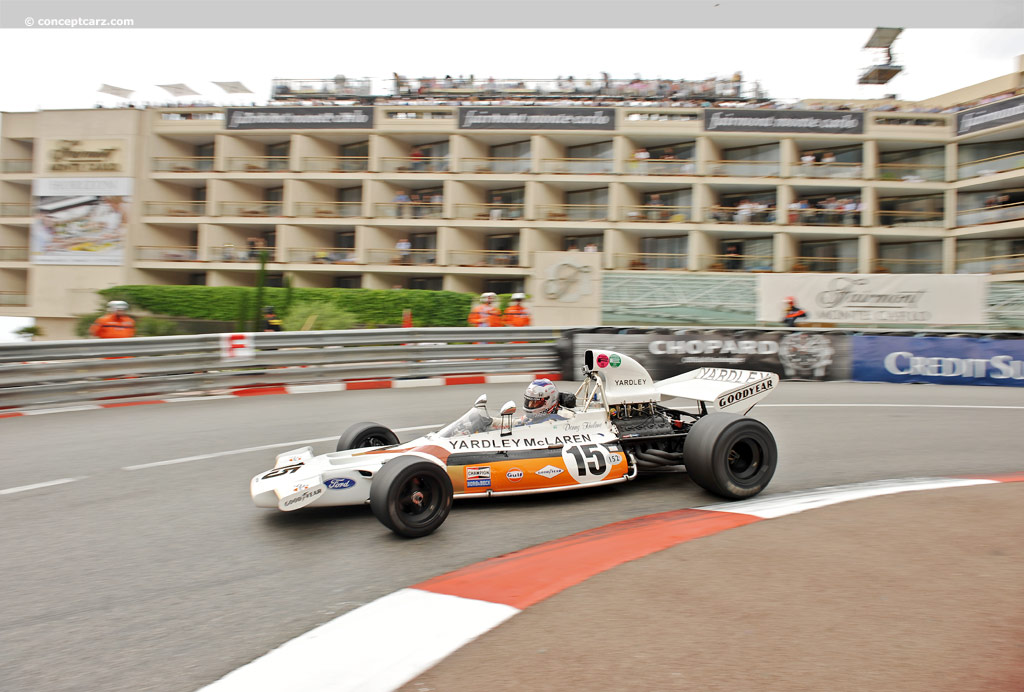
Monoposto
Chassis #: M19A-2
View info and history
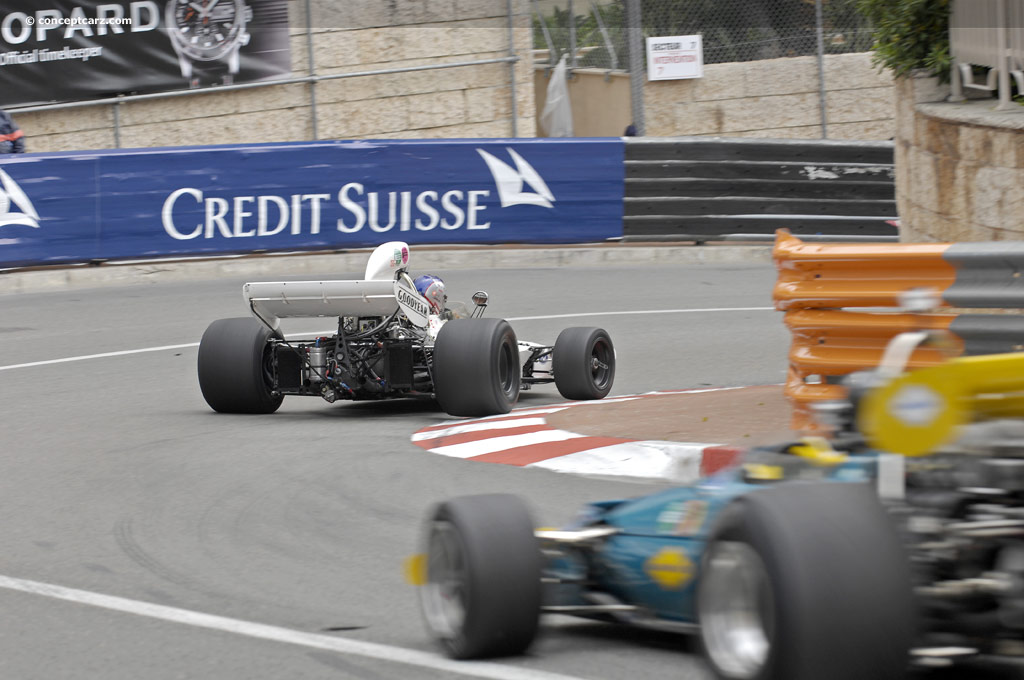
Monoposto
Chassis #: M19A-2
View info and history
- 1971 McLaren M19A Menu
- Article
- Image gallery
- Valuation
- Specifications
McLaren
Similar Vehicles
Similar Automakers
Related Drivers
 Mark Neary Donohue, Jr.
Mark Neary Donohue, Jr. Peter Kenneth Gethin
Peter Kenneth Gethin David Wishart Hobbs
David Wishart Hobbs Denis Clive 'Denny' Hulme
Denis Clive 'Denny' Hulme Jacques Bernard 'Jacky' Ickx
Jacques Bernard 'Jacky' Ickx Keith Jack Oliver
Keith Jack Oliver Brian Herman Thomas Redman
Brian Herman Thomas Redman Peter Jeffrey Revson
Peter Jeffrey Revson Jody David Scheckter
Jody David ScheckterRelated Teams
 Bruce McLaren Motor Racing
Bruce McLaren Motor Racing  Penske-White Racing
Penske-White Racing  Yardley Team McLaren
Yardley Team McLaren 1971 McLaren M19A Vehicle Profiles
Recent Vehicle Additions
Related Automotive News

WILLIAMS MARTINI RACING TO FIELD HOST OF ICONIC FORMULA ONE CARS AT AUTOSPORT INTERNATIONAL
Autosport International is proud to announce the legendary Williams Formula One cars set to appear at the 2017 show
Display will include the FW07 which gave Williams its first victory, Nigel Mansells 1992 Drivers Championship-winning FW14B, Damon...

John Barnard's Finest: Some of the Greatest of Barnard's Design
The latter-part of Barnards Formula One career would be filled with disappointments and disputes. However, there was no disputing the genius of the man from London. In fact, a couple of innovations that are mainstays in Formula One design were first...

1997 Monaco Grand Prix: If There Ever Was a Time…
Hindsight being twenty-twenty, the move from Jordan to Stewart Grand Prix would certainly seem ill-advised as the 1997 season would be an absolute shambles with the team having just eight race finishes between them out of seventeen races. However, if...

1967 Can-Am Road America: The Beginning of the 'Bruce and Denny Show'
While Formula One will be forever considered the pinnacle of motorsport, from a period between 1966 and 1986 there existed a series that would likely be the closest to anything goes as any motor racing series could truly get. Based upon the FIA Group...

1968 Belgian Grand Prix: A First for McLaren
McLaren and Formula One are truly synonymous. Over the course of its history, McLaren has completed 714 races and have garnered no less than 178 victories. But while McLaren and victory in Formula One are an almost certainty, the very first would be...







































